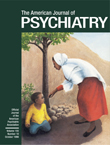Modern research tools have led to the development of new compounds targeting specific receptors in the brain. Consequently, a vast armamentarium of new therapeutic agents has emerged. Before being available for sale in the pharmacies, these new compounds go through an extensive testing process. The aim of this process is to establish efficacy and safety. This book provides an overview of the issues concerning clinical drug trials, such as methodology, ethics, regulation, and costs.
The first section of the book hones in on the ethical and social issues in clinical trials. The past practices in areas such as informed consent are compared with the current practices, which involve greater respect for patient decision-making. The issues of medical paternalism are discussed very well. In my opinion, the chapters on ethics and the role of the Food and Drug Administration are excellent and should be read by all investigators. The chapter on pharmaceutical companies provides important information ranging from drug development and regulations to profits. It may be a little extreme, however, in suggesting that the companies make undue use of government-financed research. We should recognize that drugs such as fluoxetine and clozapine have enhanced the lives of many patients. Newer agents such as olanzapine, risperidone, venlafaxine, mirtazapine, zolpidem, and the other selective serotonin reuptake inhibitors are safe as well as efficacious agents. We should also recognize that only a small percentage of laboratory compounds reach the market.
Sections 3 and 4 focus on specific patient groups used in clinical psychopharmacological trials, such as those with schizophrenia, depression, eating disorders, and alcohol dependence. These sections bring to light key issues that may be illness specific. The discussion of the “clozapine story” is particularly important not only historically but also because it provides information on mechanisms that may be used to obtain approval of potentially toxic agents that should nevertheless be in the treatment armamentarium in a limited fashion because of their unique mechanism of action. A chapter on issues pertaining to the elderly in clinical drug trials would have been very helpful because the geriatric population is the fastest growing and drugs need to be tested in this age group. A section on children and adolescents would also have been very helpful.
This high-quality, up-to-date text is easy to read and understand. Typographical errors and misspellings are rare, and the editing is excellent. Overall, the information in this book is well organized, covering the various issues involved in psychopharmacology trials. I might mention another, comparable text,
Clinical Evaluation of Psychotropic Drugs by Prien and Robinson
(1).
The Handbook of Psychopharmacology Trials would be practical and extremely useful for researchers, especially those involved in psychopharmacological research.

